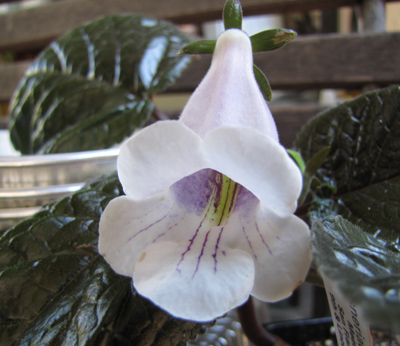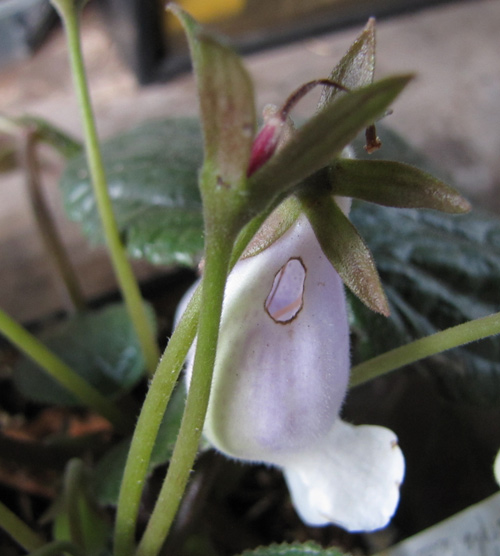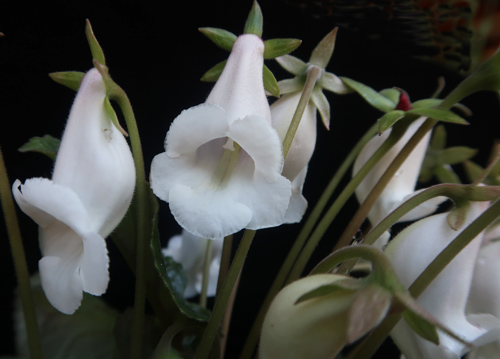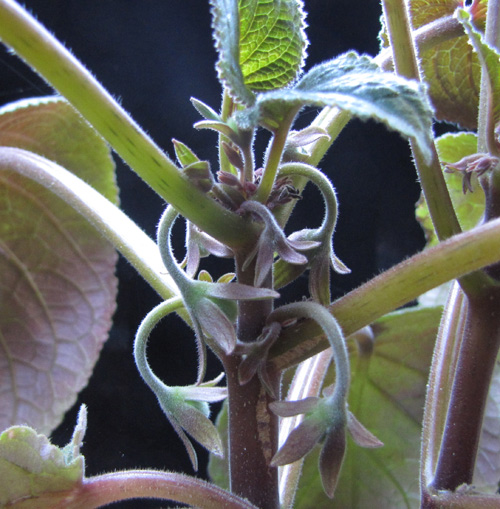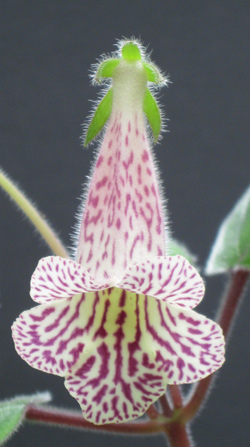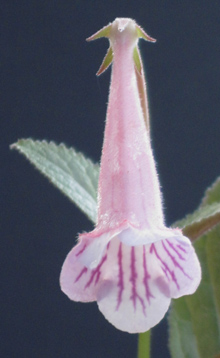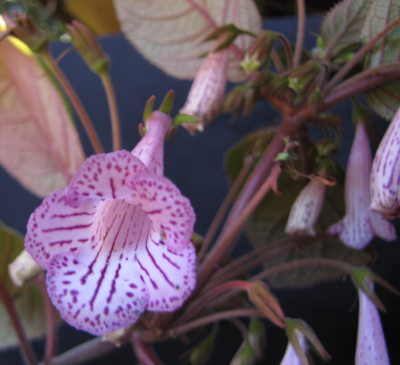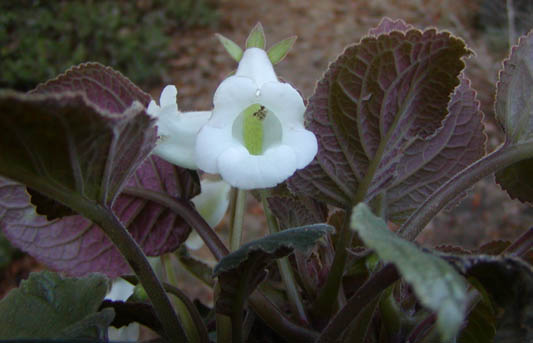
Sinningia eumorpha
Sinningia eumorpha has flowers with a yellow stripe down the center of the tube. There are purple markings in the yellow stripe; The corolla itself is either white (as here) or lavender. The white seems more attractive to me.
Unfortunately, this particular plant is no longer alive.
Sinningia eumorpha is desirable for its campanulate (bell-shaped) flower with a relatively open corolla, making the flower appear larger. This desirable trait is passed along to its hybrids.
The flower shape is associated with a shift away from hummingbird pollination (narrow tubes) to bee pollination (more open tubes). The same factor accounts for the shift in color from red to white and lavender. I have seen a hummingbird hover in front of a flower of this species, knowing it was a flower and must have food but unable to figure out how to get at it, ultimately flying away without trying to feed.
